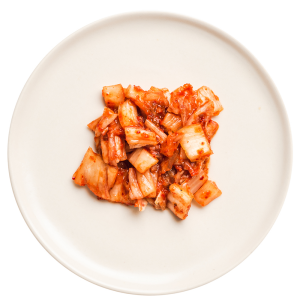Losing weight is a common goal, but it’s important to know that not all weight loss is the same. The number you see on the scale doesn’t tell the whole story. While many people focus on losing weight, it’s actually more important to aim for a healthy and fit body by getting rid of fat while keeping your muscle. In this blog post, we’ll chat about the differences between losing weight and losing fat, dig into the science of body composition, and share some practical tips to help you lose fat without worrying about the scale.
Body composition explained
Your body is made up of two main parts:
- Fat mass: This includes all the fat stored in your body, both under your skin (subcutaneous) and around your organs (visceral fat).
- Fat-free mass: This is everything else in your body, like water, muscles, bones, and organs.
Now, why is this important when we talk about the difference between losing weight and losing fat?
Here’s the deal: Muscle is more compact than fat. So, if you have a kilogram of muscle and a kilogram of fat, the muscle takes up less space in your body. Someone with more muscle and less fat might look leaner, even if they weigh the same as someone with less muscle and more fat. We also learned that your bones can get stronger and a bit heavier when you exercise regularly. Plus, your body’s water content changes throughout the day.
Here’s the kicker: You can’t predict exactly how heavy or light your body will settle at when it’s comfortable because many things affect it.
In simple terms, having a healthier body composition, which means more of the good stuff (muscles, bones, organs) and less of the not-so-good stuff (fat), doesn’t always mean you’ll weigh less on the scale.
Body composition consists of fat mass and fat-free mass, including muscle, water, bones, and organs. Muscle is denser than fat, so two people of the same weight may appear differently if one has more muscle and less fat, emphasizing that a healthy body composition is about more than just the number on the scale.

Remember: It’s about feeling good and looking fit, not just chasing a lower number on that scale.
What is the difference between Weight Loss and Fat Loss?
People often use “weight loss” and “fat loss” interchangeably, but they mean different things, and it’s more than just wordplay.
Weight loss is simply the number you see on the scale. It’s the total of everything inside you, including bones, muscles, water, and yes, fat. So, when you lose weight, you’re shedding a bit of everything.
Fat loss, on the other hand, means you’re specifically getting rid of the squishy stuff on your body – the fat. This can make you look smaller or leaner, but it doesn’t always make the scale go down.
Here’s a neat trick: Sometimes, when you start a keto diet, you can lose a bunch of weight really quickly. But guess what? A big part of that is water weight, not fat. So, it might seem like you’re dropping lots of kilos, but it’s not necessarily fat disappearing.
Now, why does this matter? Well, it depends on your goals. If you just want to be lighter on the scale, any weight loss might make you happy. But if you care about your health and how your body looks and feels, then focusing on losing fat is key. When your body has the right amount of fat, your risk of things like heart disease, stroke, and diabetes goes down.
Weight loss involves reducing overall body weight, while fat loss specifically targets excess body fat. Be cautious of rapid weight drops on diets like keto, which can be mostly due to water loss, emphasizing the importance of discerning between the two for effective health and fitness goals.

Remember: weight loss doesn’t always guarantee a healthier body. You could still have too much of that deep, visceral fat around your organs even if the scale says you weigh less. So, it’s not just about the numbers; it’s about where those numbers come from!
Keto Diet and Water Weight Loss
When it comes to the Keto Diet, it’s important to note that this eating plan induces ketosis in the body. This metabolic state leads to the burning of stored carbohydrates and the release of stored water, resulting in an initial rapid weight loss that is sometimes confused with actual fat loss.
If you’re not on a keto diet but want to reduce water weight, consider reducing your sodium intake. Excessive salt consumption can cause your body to retain extra water to maintain the proper balance of salt and water.
To lose water weight effectively, increasing water intake and reducing sodium consumption.

Remember, reducing your water intake won’t safely help you shed this water weight.
What can happen when you lose muscle in the process?
When people lose weight, they sometimes end up losing not just fat but also muscle and fluids, which can have some not-so-great effects on their health. According to a study from 2018, losing lean body mass can lead to things like a slower metabolism, feeling tired, not moving as well, and even affecting how you feel emotionally. Plus, it might make you more prone to getting injured.
On the flip side, having a good amount of muscle comes with some awesome perks like helping keep your blood sugar in check, keeping your body fat at healthy levels, and calming down inflammation. Plus, it lowers your chances of getting long-term health issues like heart problems, kidney troubles, and diabetes.
When it comes to managing your weight in the long run, having more muscle is a big win. That’s because muscles burn more calories even when you’re just chilling on the couch or doing fun stuff like jumping rope.
So, the more muscle you have, the more calories you torch with every activity – whether it’s an energetic workout or just relaxing!

Remember, when you lose lean body mass, your metabolism can slow down, and you might end up gaining fat again and having a less healthy body composition!
3 Tips on how to lose fat and maintain muscle
- Protein is like your superhero!
If you’re trying to lose weight, protein is your best buddy for keeping the muscles you have and even growing new ones. When you’re cutting calories to lose weight, having enough protein in your diet can help you hang on to your precious muscle while saying goodbye to fat. Studies found that eating more protein, roughly 1 gram per kilo of body weight, does wonders for keeping muscle and reducing fat. Your protein needs might vary depending on your age, health, and activity level, but as a general rule, aiming for about 1 to 1.6 grams of protein per kilo of body weight daily can be a good strategy to maintain muscle and promote fat loss when you’re dieting.
Many people often underestimate the protein content in various foods, including plant-based options, but it’s entirely possible to meet your protein goals through a well-balanced diet that includes a variety of protein-rich sources such as legumes, tofu, tempeh, nuts, and seeds. Don’t be surprised by how easily you can incorporate protein into your diet, even if you choose plant-based alternatives! Here’s a one-day meal plan example that showcases how you can achieve your protein goals with plant-based options:

As you can see from this one-day meal plan example, achieving your protein goals with plant-based sources is not only feasible but also delicious and diverse. Plant-based proteins are not only beneficial for your muscles but also for your overall health and the environment. Embracing a diet rich in plant-based proteins not only supports your weight loss and muscle maintenance goals but also aligns with sustainable and ethical food choices.

Remember! Try to consume at least 1 gram of protein for every kilogram of your body weight to maintain muscle!
- Focus on strength
To lose fat you don’t need to turn into a gym rat. Just get your body moving with activities that make your heart pump faster. But here’s the secret sauce: throw in some muscle-building exercises too. Think squats, deadlifts, lunges, and push-pull exercises – they’re like superheroes for your muscles.
Now, when you’re doing these muscle-building exercises, try something called ‘progressive overload.’ Fancy term, right? Basically, it means you keep challenging yourself by lifting heavier weights as you get stronger. This keeps your body on its toes and helps it burn fat while holding onto that precious muscle.

Remember: Don’t get discouraged if the numbers on your scale doesn’t change much. Strength training can be a bit sneaky. It’ll change how your body looks, making you leaner, but the scale might not move every single week. So, focus on how you feel and how your clothes fit – that’s where the magic happens!
- Control the calories
Let’s talk about calories – the energy in the food we eat. To lose fat, you need to eat fewer calories than your body uses up. That’s the basic rule for losing extra kilos, whether you’re focusing on fat loss or not.
Now, here’s a little trick: When you’re eating lots of protein, be careful because it can sometimes come with lots of calories too. So, keep an eye on the number of calories you’re taking in and try to avoid foods that are super high in calories and processed. Focus on healthy sources of protein such as chicken breast, turkey, fish, lean beef, pork loin, eggs, greek yogurt, cottage cheese, tofu, lentils, edamame, quinoa and tempeh and plenty of veggies, whole grain and healthy fats. to give you the extra nourishment your body needs.
(WANT SOME PLANT-BASED INSPIRATION HEALTHY RECIPE? CLICK HERE! )

Remember: Your goal is to create a calorie deficit of 200-500 calories each day. But always make sure you do this in a healthy and sustainable way, whole foods are your best friend!
How do you know you are losing fat?
So, how do you really know if you’re shedding fat, not muscle or water weight? Well, the scale can be a bit vague. But here are a couple of practical methods that don’t require fancy equipment:
- Body measurements with a tape measure: You can track changes in multiple areas like your waist, hips, legs, arms, chest, and shoulders. Fat loss can happen anywhere, so measuring several spots gives you a more complete picture. It’s a simple and effective way to see your progress.
- Take pictures: Snap front, back, and side photos about once a month. Just make sure you wear the same outfit, strike the same pose, and have the same background in each photo. This helps you see your changes over time and is an easy way to track your transformation.
While these methods aren’t perfect, they are accessible, straightforward, and can give you a pretty good sense of how you’re doing on your journey to a healthier you.
The Bottom Line
Losing weight is not just about the number on the scale. It’s essential to focus on losing fat while preserving muscle mass for a healthier and fitter body. Water weight can temporarily affect the scale, and various factors contribute to your overall body composition. To achieve this:
- Prioritize a balanced diet with sufficient protein
- Engage in regular exercise that includes strength training, monitor your progress using methods like body measurements and photos
- Aim for gradual and sustainable weight loss rather than extreme calorie restriction.
Ultimately, a holistic approach to health and fitness goes beyond the scale, emphasizing overall well-being and body composition.

Disclaimer:
At SaladStop! Group, our commitment is to empower every individual with reliable, evidence-based nutritional and wellness guidance. To earn your trust as your ultimate resource for nutritional information, our content undergoes rigorous nutritional scrutiny to ensure its accuracy, whether it’s about our offerings, culinary creations, or services. Please note that all information provided is for informati




